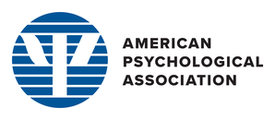history of the standards
The 2014 edition addresses important developments that have occurred in the field of testing, requiring significant revision to the Testing Standards. Five areas, in particular, receive attention in the 2014 revision:
There have been six documents from three sponsoring organizations guiding the development and use of tests.
- Examining accountability issues associated with the uses of tests in educational policy
- Broadening the concept of accessibility of tests for all examinees
- Representing more comprehensively the role of tests in the workplace
- Taking into account the expanding role of technology in testing
- Improving the structure of the book for better communication of the standards
There have been six documents from three sponsoring organizations guiding the development and use of tests.
- Technical Recommendations for Psychological Tests and Diagnostic Techniques was prepared by a committee of the APA and published by APA in 1954.
- Technical Recommendations for Achievement Tests was prepared by a committee representing AERA and the NCMUE (which is now NCME) and was published by the National Education Association in 1955.
- Standards for Educational and Psychological Tests and Manuals replaced the earlier two documents. It was prepared by a committee representing AERA, APA, and NCME and was published by APA in 1966.
- Standards for Educational and Psychological Testing was prepared by a committee representing AERA, APA, and NCME and was published by APA in 1974.
- Standards for Educational and Psychological Testing was a revision of the 1974 Standards. It was also a collaboration of AERA, APA, and NCME and was published by APA in 1985.
- Standards for Educational and Psychological Testing was a revision of the 1985 Standards. It was prepared by the Joint Committee appointed by AERA, APA, and NCME and was published by AERA in 1999.
- The new edition of the Standards for Educational and Psychological Testing was released in July 2014. It was prepared by a Joint Committee selected by the Management Committee and is published by AERA.


